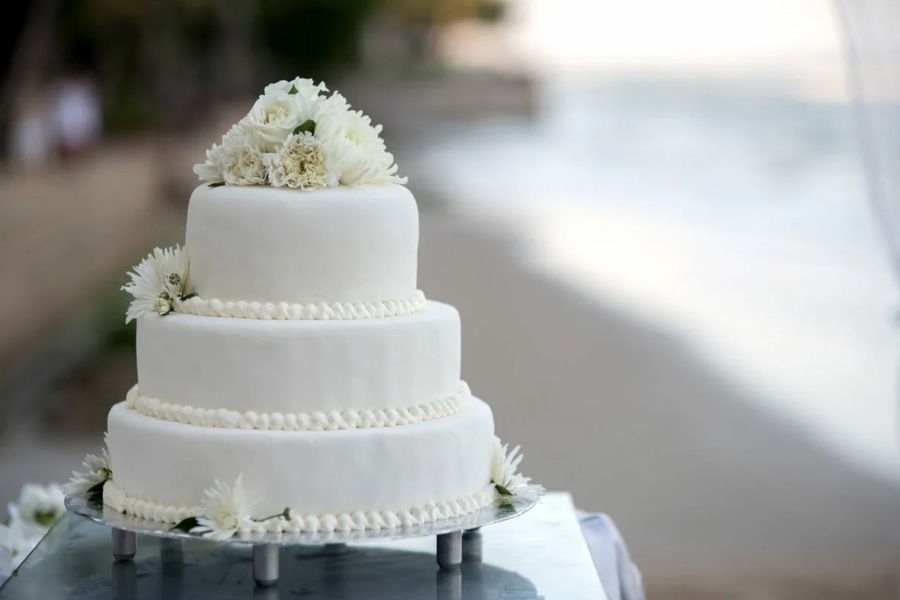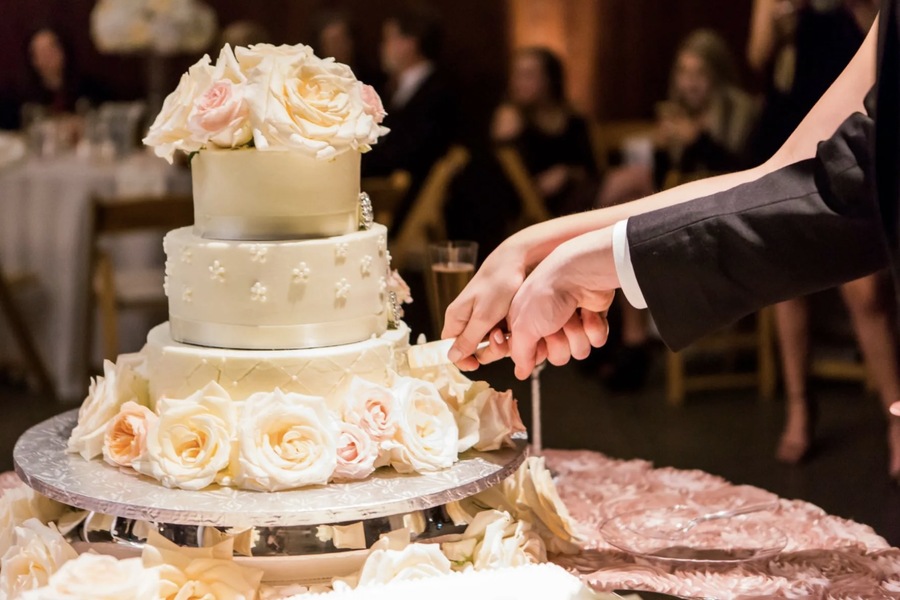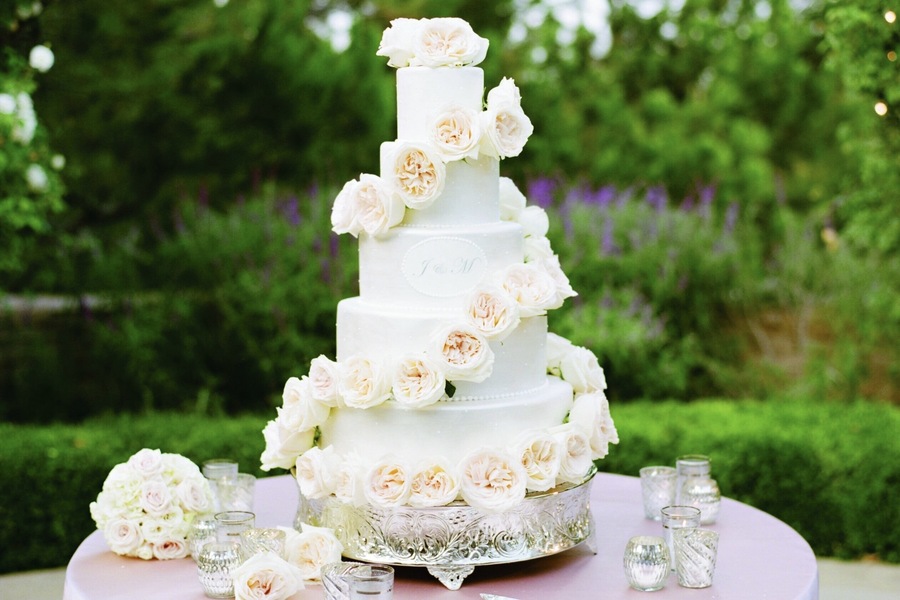A wedding cake is more than just a dessert; it is a timeless tradition and an essential element of any wedding celebration. Its presence on the wedding day symbolizes the sweet beginning of a couple’s new life together, embodying their shared joy, individuality, and personal taste. From classic designs to modern interpretations, wedding cakes have evolved over the centuries, yet they continue to hold an iconic place in the marriage ceremony. For those seeking a custom creation, Florist Near Me offers exquisite wedding cakes that perfectly blend tradition with personalized design.
Today’s wedding cakes come in various forms, shapes, and flavors, making them a true reflection of the couple’s preferences and creativity.
Symbolism of the Wedding Cake
The history of the wedding cake goes back to ancient Roman times, where bread or wheat cakes were broken over the bride’s head to symbolize fertility and good fortune. Over time, this tradition has transformed into the multi-tiered masterpieces we see today, which serve as both a culinary treat and a visual statement. The wedding cake is often viewed as a representation of the couple’s unity and happiness, and cutting it together symbolizes their first act as partners in their new life.
Modern Wedding Cakes: Shapes, Types, and Styles
Modern wedding cakes offer limitless possibilities for design, flavor, and presentation. Whether you’re looking for a grand, multi-tiered cake or a minimalist, understated dessert, there is a wide variety of options to suit every wedding theme.
Shapes and Symbolism
Rings: Cakes shaped like rings symbolize eternal love and fidelity.
Hearts: Representing tenderness, devotion, and romance.
Circles: A circle-shaped cake embodies happiness, unity, and the warmth of the sun.
Horseshoes: Known as symbols of luck and prosperity, horseshoe-shaped cakes are a favorite among couples who want to bring good fortune into their marriage.
Types of Dough
Different types of dough offer a range of textures and flavors:
Sponge Cake: Light and fluffy, sponge cakes are the most popular choice for wedding cakes due to their versatility.
Shortbread: Rich and buttery, shortbread cakes offer a denser texture and are often used for cakes that require structural integrity.
Chocolate Cake: For chocolate lovers, a decadent chocolate cake is a delicious way to bring indulgence to the wedding table.
Cake Fillings
The choice of filling is crucial to the overall taste of the cake. Some popular options include:
Classic Buttercream: Sweet, smooth, and versatile, buttercream pairs well with almost any cake flavor.
Fruit Fillings: A refreshing choice, often featuring berries, citrus fruits, or exotic flavors like passionfruit or mango.
Chocolate Mousses: Rich and creamy, chocolate mousse adds a luxurious element to the cake.
Mascarpone and Cream: Light and airy, mascarpone or whipped cream fillings with fresh fruits or berries offer a refreshing alternative to heavier creams.

Popular Types of Wedding Cakes
Here are some of the most common styles of wedding cakes that are trending in modern celebrations:
1. Cream Cake
Cream cakes feature soft sponge layers with buttercream or other types of cream fillings. They are a traditional choice for weddings and can be customized with a variety of flavors and decorative elements. You can use fillings like mascarpone, fruits, berries, cottage cheese, or classic mousses to add a unique twist to the cake.
2. Open Cake
The open cake, or “naked cake,” is a popular option for rustic or outdoor weddings. This type of cake consists of several tiers with exposed layers of sponge and cream, often decorated with fresh berries, fruits, and flowers. Open cakes tend to have a natural, organic look, perfect for couples who prefer a laid-back aesthetic.
3. Soufflé Cake
For those who prefer something light, a soufflé cake is a fantastic option. Soufflé cakes have a dense yet airy consistency and can be made with a variety of flavors and ingredients, such as yogurt, curd, or “bird’s milk.” The addition of multi-colored soufflé layers adds visual appeal to this delicate cake.
4. Cake with Mastic
For a more formal wedding, cakes covered with mastic (fondant) are an excellent choice. Mastic allows for intricate designs, patterns, and details on the cake’s surface. It can be used to create floral arrangements, lace-like textures, or even themed elements that match the wedding décor. These cakes are often adorned with decorative elements such as berries, flowers, and icing.
5. Marzipan Cake
Marzipan, made from almonds and powdered sugar, gives cakes a unique flavor and texture. These cakes are usually not decorated with fruits or berries, as the moisture can destroy the marzipan. Instead, they are often paired with intricate sugar work or simple floral accents.
6. French Croquembouche
The French Croquembouche is a tower of small profiteroles held together with caramel. It’s a stunning and unique alternative to the traditional tiered wedding cake. Croquembouches are typically topped with spun sugar and can be customized with flavors like vanilla, chocolate, or coffee.
7. Lambeth Style Cake
A Lambeth-style cake is an elegant, classic option, featuring intricate piping, monograms, and stucco work created from icing. These cakes are traditionally white, offering a timeless and luxurious look that is often associated with royal or formal weddings.
How to Choose the Perfect Wedding Cake
Selecting the right wedding cake involves several factors, from design and flavor to size and presentation. Here are some tips to help you make the best choice:
1. Attend a Cake Tasting
Many pastry shops offer paid or free tastings, allowing you to sample different flavors and fillings. This is an excellent opportunity to finalize your cake’s taste profile and find the combination that best suits your preferences.
2. Choose a Design
The cake design can be inspired by any element of your wedding decor, such as the flower arrangements, the bride’s dress, or even the venue’s architecture. Some couples also choose to incorporate personal hobbies or shared interests into the cake design for a truly unique touch.
3. Determine the Size and Tiers
To ensure your cake is the right size, you’ll need to know the approximate number of guests. A good rule of thumb is to allocate about 150-200 grams of cake per guest. Keep in mind that decorative elements like fresh berries, flowers, or figurines will add to the cake’s overall size.
4. Consider the Season
If you’re having a summer wedding, choose a filling that won’t melt or spoil easily in the heat. Buttercream or whipped cream may not be ideal for outdoor receptions in warm climates. Opt for more heat-resistant fillings like mousse or ganache.
5. Plan the Cake Décor
Every element of your cake’s decoration should look natural and be edible. Fresh flowers, fruits, and carefully crafted sugar work can bring your cake to life while maintaining an elegant, cohesive look.
6. Order a Trial Cake
Before committing to your final cake design, order a small trial cake to see how it looks and tastes. This will give you an opportunity to make any necessary adjustments before the big day.
Memorable Cake Presentation
The presentation of the wedding cake is a significant part of the wedding reception. Here are some ideas to make the cake cutting ceremony truly memorable:
1. Select a Cake Stand
For large, multi-tiered cakes, choose a sturdy, flat stand that can support the cake’s weight. Avoid stands with legs, as they may be unstable and lead to accidents.
2. Prepare the Cake-Cutting Tools
Make sure you have a beautiful cake-cutting set, including a knife and server, ready for the ceremony. These tools will not only be used in photos but can also be kept as keepsakes.
3. Choose a Backdrop
When cutting the cake, position it in front of a lovely backdrop like a wedding arch, floral arrangement, or even a custom photo zone. This will ensure stunning photos during the ceremony.
4. Create a Sweet Table
To keep guests satisfied before the cake cutting, set up a sweet table with smaller desserts. This way, the cake can remain on display without the risk of being nibbled on prematurely.
5. Coordinate the Cake Entrance
Make the cake cutting a highlight of the evening by dimming the lights, playing meaningful music, and giving a heartfelt speech. The dramatic entrance will make the moment feel even more special.
6. Decorate the Cake Table
Add visual flair to the cake table by surrounding it with flowers, candles, or even a chandelier or hanging swing. These elements can enhance the romantic atmosphere and make the cake the focal point of the room.

Ordering a Wedding Cake in Dubai
For couples planning a wedding in Dubai, Florist Near Me offers custom wedding cakes that bring luxury and elegance to your special day. Their signature three-tier Classic Floral Wedding Cake, weighing 12kg, costs AED 3,999 and showcases exquisite craftsmanship. In addition to the cake, Florist Near Me also provides wedding bouquets and floral arrangements for the hall, allowing you to create a cohesive and stunning wedding theme.
Conclusion
A wedding cake is more than just a dessert—it is a reflection of your love story, your personality, and your shared joy. With careful planning, creative design, and the perfect combination of flavors, your wedding cake can be a highlight of your celebration, leaving a lasting impression on your guests. Whether you prefer a simple, rustic cake or a grand, multi-tiered masterpiece, the right wedding cake will not only satisfy your sweet tooth but also create a lasting memory of your special day.

Biker, doer, guitarist, Eames fan and TDC honorary member. Performing at the fulcrum of art and computer science to craft meaningful ideas that endure. Let’s chat.
